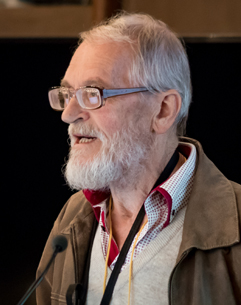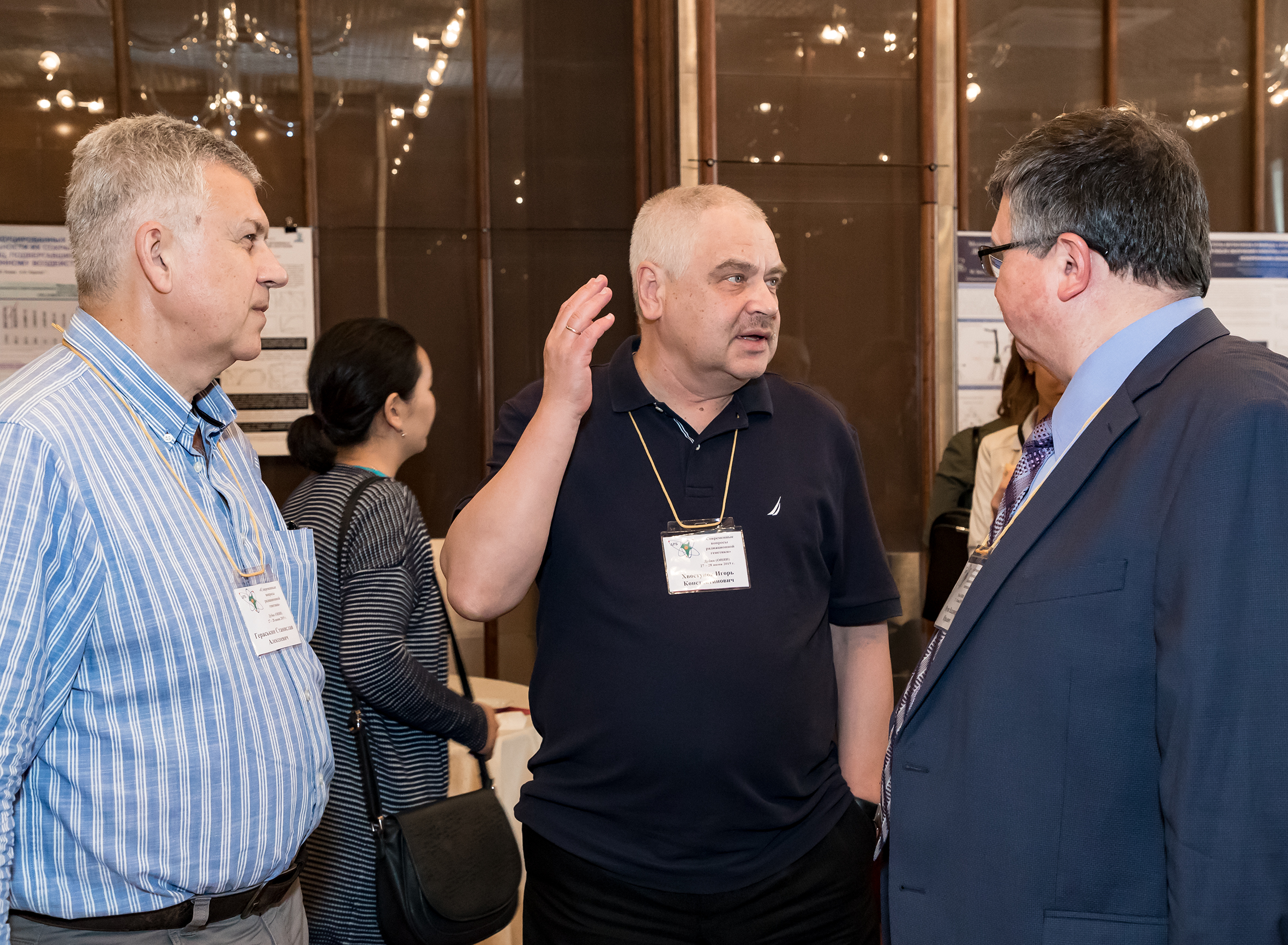Radiation Genetics: results and plans
News, 19 July 2019
Please, find below the end of the article by Olga Tarantina (JINR Weekly Newspaper) about the Conference “Modern issues of radiation genetics” that took place on 27 – 28 June 2019.
First part of the article “Radiation Genetics: results and plans”
Photo- and video report on the Conference
I. D. Alexandrov (DLNP) made the report “Radiation genetics of generative cells of animals: yesterday, today, tomorrow”.
 “In my report, I make an overview of a significant research field, radiation genetics of cells. Everything emerging in generative cells, compared to somatic ones, is inherited by the offspring. So the question arises: if a parent is exposed to radiation, what will he pass to its offspring for many generations to come? It is the key theme of our research that we, unfortunately or fortunately, cannot conduct at human beings. However, we have a very convenient genetic object: drosophila the gametogenesis process of which is similar to a human one, i.e. development of germ cells, and others. Just like a mouse. Drosophila and a mouse are two main objects the results of research at which can be extrapolated for a human being without exposing the latter one to radiation.
“In my report, I make an overview of a significant research field, radiation genetics of cells. Everything emerging in generative cells, compared to somatic ones, is inherited by the offspring. So the question arises: if a parent is exposed to radiation, what will he pass to its offspring for many generations to come? It is the key theme of our research that we, unfortunately or fortunately, cannot conduct at human beings. However, we have a very convenient genetic object: drosophila the gametogenesis process of which is similar to a human one, i.e. development of germ cells, and others. Just like a mouse. Drosophila and a mouse are two main objects the results of research at which can be extrapolated for a human being without exposing the latter one to radiation.
What we are interested in? What are inherited genetic modifications? We use a set of methods and detect the types of genetic modifications using them. Using all these methods, namely genetic, cytologic, and molecular ones, we are able to detect the full range of possible changes that, as we may suppose, the first generation inherits.”
Staff members of the Institute of Radiology and Agroecology (Obninsk) made several reports at the Conference. I asked Head of one of the laboratories S. A. Geraskina (left in the photo) to tell about this Institute.
“Our Institute was established in 1970, and the concept was that it would provide the products to citizens during a nuclear war. The major research was aimed to study how to feed people in the conditions of a massive nuclear attack. In those times, research on peaceful themes was not given much attention. Nevertheless, studies on the nuclear power supply and its ecological problems, mutagenesis, fundamental problems were actively developed. It was in Dubna where we found contacts: Vladimir Ivanovich Korogodin worked here, and we discussed with him the issue of radiotaxonomy, i.e. the dependence of organisms’ resistance on the size of a genome. He proposed his own approach, my colleague and I had our own one. Moreover, I often came to Dubna in those days. It was a wonderful time when fundamental problems were solved through discussions.
Nowadays, the Institute aims to solve ecological problems in the atomic field: support of the normal operation of stations being under the construction, and solving the problems of nuclear heritage, namely the Chernobyl disaster, the South Ural. Now, we are working in Fukushima. A relatively new direction being developed is radiation technologies. How to use ionizing radiation to keep products or increase the harvest. In fact, these technologies were mostly developed in the USSR, but after the Chernobyl disaster and the tough 1990s, their development was abandoned. Now, we come back to them, however, they were pioneering in that time, and now the USA and Europe are leaders in the field. Moreover, China and South Asia are actively developing in this field, and we are falling behind. Just imagine, that 30 per cent of agricultural products are thrown just because they go off. It is possible to avoid it: there are necessary technologies, the harvest can be increased, new sorts of plants may be used. Nowadays, more than 3,000 of agricultural sorts of plants were obtained thanks to radiation mutagenesis. It should be developed. Now we can influence particular genes on purpose, and this accelerates the selection process. We work on it as well.
One of the most important aspects of our work is radiobiological one, research in the disaster areas, i.e. we study how the population feels in conditions of long-continued irradiation. It is very harmful when some misconceptions emerge about the danger of excessive levels of ionizing radiation. There are even publications made by famous Western scientists saying that a number of large mammals rapidly decreases in the Chernobyl area, brains of birds become smaller, and telling other scary stories. One should not take it seriously, and we have been studying it for many years. We see that there are genetic effects, and I will report on them. We observe a change in the gene expression but we do not see any constant morphological changes, let alone in the reproduction. We are solving such a task in Fukushima. Our Japanese colleagues found out just after the disaster that young pine and spruce trees, very sensitive to radiation exposure, have morphoses, changes. Their tops started to double because of the mutation. We have begun to study this problem and won the RFBR grant jointly with Japanese colleagues. Moreover, we work with Belgian colleagues.”
I. V. Malto (Seversk Biophysics Research Centre, Tomsk region) participated in the Conference with a poster presentation: “My poster report was dedicated to the professional radiation exposure obtained by staff members of one of the nuclear companies in our country, namely the Siberian Chemical Combine. We conduct a periodic survey of staff members, and my work is to compare cytogenetic changes in lymphocyte cells from 2014 to 2017. It is a pleasure to meet colleagues from LRB and Russian scientific centres at the Conference, to have talks with old acquaintances and make new ones.”
Olga Tarantina, JINR Weekly Newspaper
Photos by Elena Puzynina

